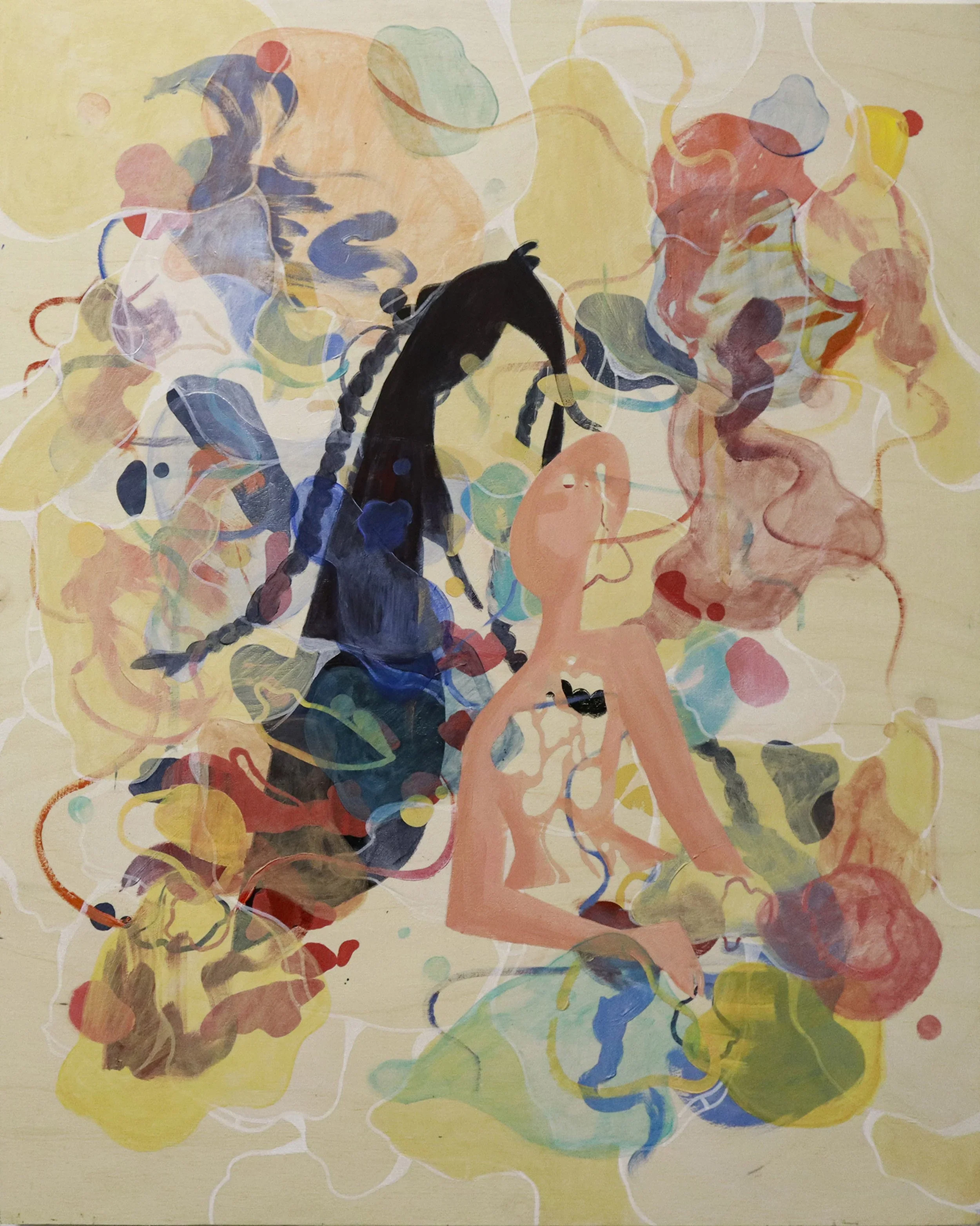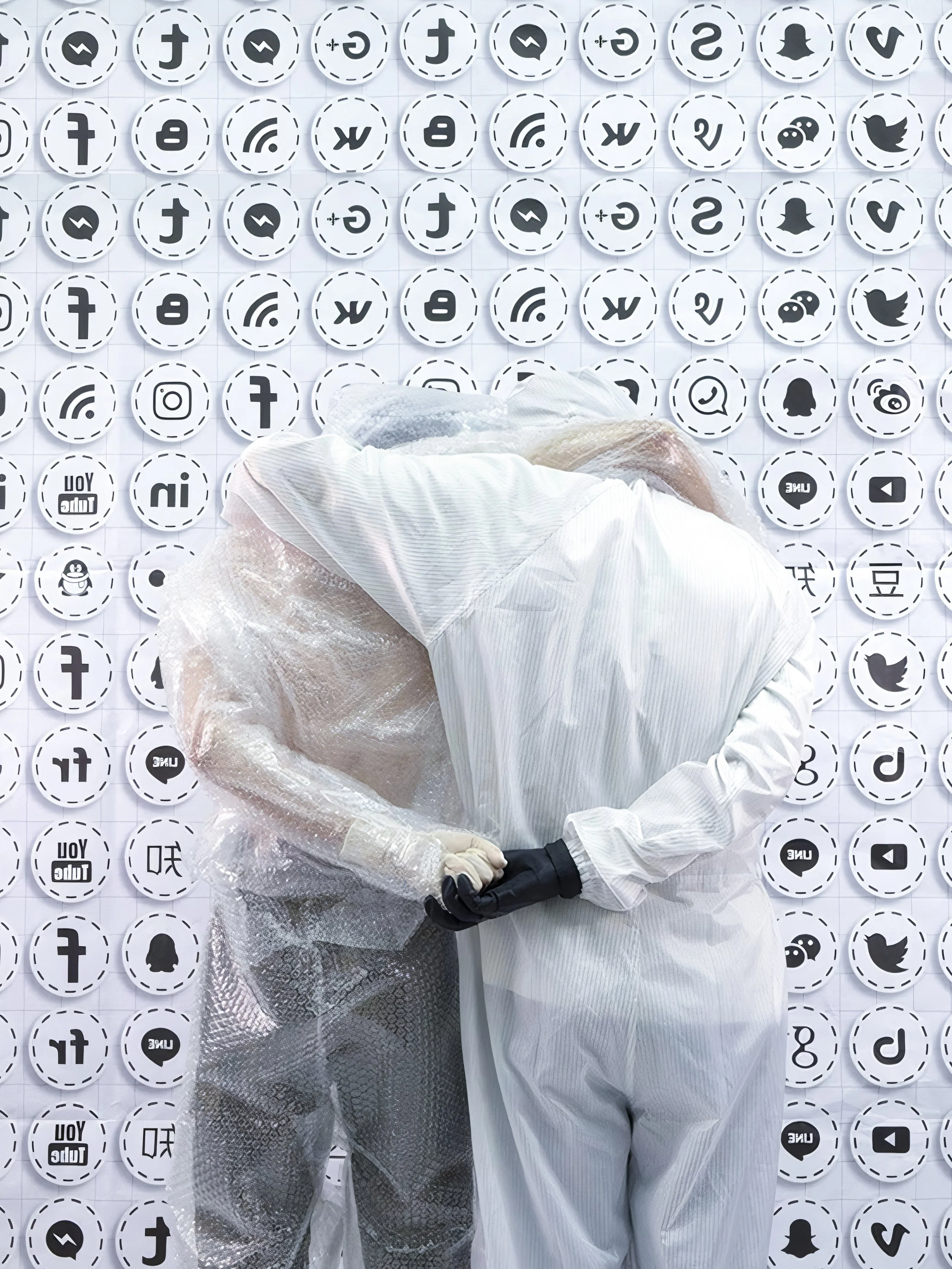10 Questions with Andy Newmerge
Al-Tiba9 Art Magazine ISSUE16 | Featured Artist
Born in a small industrial town in Russia, Andy was educated as a designer and later moved to Saint Petersburg, where he experimented a lot with different art mediums. His main field was CG images and animations, and his big inspiration was Andrey Rublev's "Trinity" icon made in reverse perspective. His experiments with similar techniques in the 3D space brought him to the most prominent digital exhibitions, such as CADAF Art Month and NFT.NYC in Paris and New York City, and earned him the North Star WEB3 awards as "The most stylish author." Andy continues with his experiments with software and composition techniques to implement that perspective effect on the viewers, making them feel that it's not the viewer who looks at the picture but the picture who looks.
Andy Newmerge - Portrait
ARTIST STATEMENT
Andy Newmerge seamlessly blends traditional iconography with modern technology through his innovative use of reverse perspective. Drawing from ancient techniques, Newmerge reinterprets spatial dynamics within 3D digital art, challenging conventional visual norms. This method allows him to create thought-provoking compositions that bridge historical and contemporary art, enriching the visual experience with depth and complexity. In his creative process, Newmerge employs advanced 3D software to construct intricate scenes that defy traditional perspective rules. By designing specialized 'lenses' and developing custom scripts, he crafts images that offer viewers a fresh lens through which to explore space and perception. Newmerge's goal is to bridge the gap between traditional and digital art, creating works that resonate on both aesthetic and intellectual levels. By integrating reverse perspective into his digital practice, he provides a novel perspective on visual storytelling, inviting viewers to engage with familiar subjects in new and unexpected ways.
AL-TIBA9 ART MAGAZINE ISSUE16
INTERVIEW
Please tell our readers about your early life and background and how it influenced your journey into the world of art and design.
I was born and raised in the small provincial town of Magnitogorsk in the Southern Urals. It's a city divided by a river with a massive metallurgical plant on one bank, which left me with a strange attachment to the sound of industrial techno.There, I studied design and started taking on my first interior design projects. Later, I moved to Saint Petersburg, a cultural hub for many creative professionals. In Saint Petersburg, I gradually transitioned from interior visualization to commercial 3D content and animation for various manufacturers and services. Currently, I am in Georgia, where I am opening a 3D animation studio.
At what point did you first realize you wanted to be an artist? And what inspired you to follow this path?
Almost all my activities were somehow related to creativity. Besides commercial orders, I sometimes felt a strong urge to create something for myself, to express what was on my mind. Despite this, I never dared to call myself an artist, considering myself more of a craftsman with technical skills who could fulfill orders. I never imagined anyone would want to buy my paintings, and when it first happened, I was stunned. It was the first time I felt appreciated outside of commissioned work. On a broader scale, I believe that the development of NFT technology and digital art platforms provided a massive boost, allowing many artists to express themselves, bypassing the traditional gallery system and essential handshakes previously needed for recognition in the art world.
How did your education in design shape your approach to art, especially in your transition to digital mediums?
I acquired most of my knowledge and skills thanks to the internet, for which I am very grateful. I believe we live in an incredible time when we have access to a vast amount of information, and all that separates us from growth is curiosity and a probing mind. I've often witnessed how the outdated education system didn't contribute to individuals' development and continuation in their chosen field, especially when professions emerge, become obsolete, and disappear along with technological advances.
What led you to experiment with different art mediums, and how did you eventually focus on CG images and animations?
Since school, I experimented with various media, including photography, graphic design, and music, searching for rare tutorials online. I view any creative medium as a vast playground, a field for experiments. It's not so important whether it's a chord on a guitar, a pencil sketch, a 3D model, or a clip. Each process has its magic of "what if," allowing for experimentation and play. However, in any medium, there comes a point where discoveries become fewer, and monotony increases. When I first opened a 3D editor, I was astonished by the sheer number of functions built in. It was initially intimidating, but then became a driver to ensure projects didn't become routine. Frankly, performing routine tasks is not my forte. Working with 3D editors involves high variability in performing the same tasks, akin to solving puzzles, which positively impacts engagement in the process. Just remember to save frequently.
Let's talk about your work. Can you describe your creative process when working with 3D software? Where do you get your inspiration, and how do you translate it into the final piece?
Everything starts with an idea, usually coming in the middle of the night, replacing or complementing thoughts about the transience of existence. Suitable images are born from this idea, and sometimes, I draw quick sketches to capture the image. Then, I create a rough composition of blocks in a 3D program, set up quick lighting, and position the camera using a custom script that allows for capturing images in reverse perspective space. This process is complicated because I can'tevaluate the composition until I hit the render button, so setting up the composition takes longer, requiring a lot of trial and error. This influenced me to learn to visualize things in reverse perspective, and now I often practice it. However, I'm glad that the processing power of CPUs and GPUs has increased to the point where I can now get a rough render almost instantly, greatly simplifying the work compared to 5–10 years ago when a single render took hours just to check if everything was okay with the scene and settings.
Your work challenges conventional visual norms and shifts the viewpoint from the viewers to the work. Can you explain how you achieve this effect and what it means for the viewer's experience?
That's right. In the classic perspective, the vanishing point lies somewhere on the picture plane. However, in reverse perspective, the rules of composition change, and the vanishing point cannot be built on the picture; it shifts inside the viewer, making all lines converge within us, so the painting looks at us rather than us looking at it. Another interestingaspect is that objects in reverse perspective resemble how a child might draw them, trying to show objects from all sides. Only over time do they "relearn" to draw according to the rules of perspective. Cubism used a similar concept, where artists broke objects into blocks, depicting them from all sides simultaneously, reflecting the essence of the object and its properties and functions instead of its form.
How do you blend traditional iconography with modern technology in your digital art, and what challenges and opportunities does this combination present?
The reverse perspective technique was discovered by Pavel Florensky and is widely used in icon painting. The famous Russian icon painter Andrei Rublev created his work "Trinity" using this technique, inspiring me to use it in 3D programs. I was captivated by the intangible sense of distorted space, changing the perception and meaning of everything depicted in the paintings, even the most ordinary objects. Since 3D programs are designed to use standard linear perspective by default, I spent time figuring out how to bypass this limitation. Initially, I tried creating a system of lenses based on drawings I found in a scientific report by researchers working on optics. I modeled these lenses directly within the 3D editor. To my surprise, it worked, and I got a 3D image of space in reverse perspective for the first time. Later, a specialscript was created that allowed for changing the program's settings to achieve not only reverse perspective but alsomodifying focus parameters and other virtual "camera" settings, enhancing the overall effect.
Ultimately, what messages would you like to convey with your art? What do you want the viewers to perceive and to get away from your work?
I've often heard the saying that good art doesn't provide answers but asks questions. This phrase stuck with me for some time. I wanted to fill my works with complex meanings, trying to predict what would inspire people or pose those sacramental questions. I've always been enchanted by works filled with symbols, meanings, and personal experiences of my favorite authors, and I tried to match up. Now, I feel that striving to match something great is an invisible barrier. At least, I feel that creativity is an excellent tool for describing certain things when all words seem inadequate.
Looking ahead, what future projects or experiments are you currently working on, and how do you envision the evolution of your art in the coming years?
I would be interested in experimenting with physical installations using a reverse perspective. Honestly, I've already conducted some experiments, buying old plasma TVs to extract the necessary elements for the installation and almost assembling my first physical work a couple of years ago, though I have no idea where it is now, in another country, in a past life. Additionally, I would like to contribute to the community of digital artists, showcasing how many talented people create more than just graphics for games and movies day by day. I'm currently working on a project aimed precisely at this.
Lastly, are there any shows, galleries, or publications where our readers can find your work?
You can see my work by visiting my website at www.andynewmerge.com. All event announcements in which I participate can be found on my Instagram at @mergenew.




















